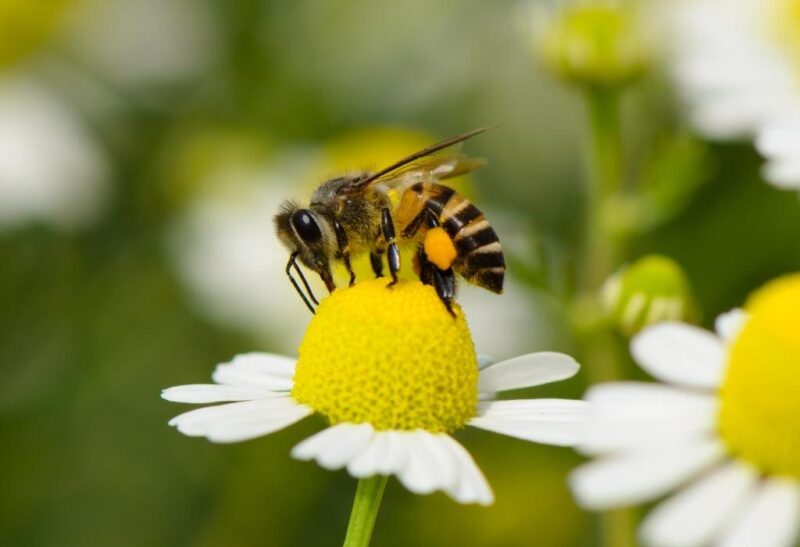Bees play an essential ecological role as they pollinate fruits, flowers, and vegetables which helps them survive, reproduce, and yield more fruits and seeds. In fact, one in every three food bites humans take is all thanks to their mighty pollinating prowess. In turn, bees produce honey from the nectar they take from plants.
Not all bees make honey. Species that can’t produce honey are the leafcutting bees, sweat bees, miner bees, colletid bees, oil-collecting bees, and swift and comb-bearer bees. There are, however, three bee species that can make honey—honey bees, bumble bees, and stingless bees.
If you want to know more information about these bees, why they make honey, other insects who can make honey, making honey without bees, determining fake honey, and more, simply read more of this article!
Table of Contents
Is It Only Honey Bees That Make Honey?
Honey is not only produced by honeybees. Bumble bees and stingless bees can also produce honey but with relatively smaller amounts compared to honey bees.
All honey-making bees share a common trait, and that is being eusocial with nests containing one queen and several workers who divide labor and various tasks.
Take a look at the different types of bees that make honey:
Honey Bees

Bees belonging to the Apis genus are collectively referred to as honey bees. They’re the most popular species of honey-making bees consisting of 3 subgroups: giant honey bees, dwarf honey bees, and cavity-nesting honey bees.
- Giant honey bees are distributed widely across Southern Asia. They have a unique nest design where the comb is exposed and placed under cliffs or tree branches instead of typical cavities.
Honey collectors harvest honey from these species seasonally and directly from the colonies since they cannot be managed for pollination. One colony is large enough to produce up to 33 pounds of honey.
- Dwarf honey bees are 0.25 to 0.39 inches in size and are the most primitive bee species evidenced by their simple hive designs and the construction of air-exposed combs.
Although they produce the smallest amounts of honey compared to other honey bee species, there are still food markets that sell their nests. Bee hunters will shake the bees off and remove their entire single comb nests before providing them to sellers.
- Cavity-nesting honey bees include 4 species: European honey bee, Asian honey bee, Koschevnikov’s honey bee, and the Sulawesian honey bee. These bees build nests in stems and abandoned wooden tunnels.
European honey bees are devoted honey makers, which is why they’re the most ideal cavity-nesting honey bee species for commercial beekeeping, wherein beekeepers can manage up to 2,000 or more productive colonies. They’re not called the king of all honey bees for no reason!
Bumble Bees
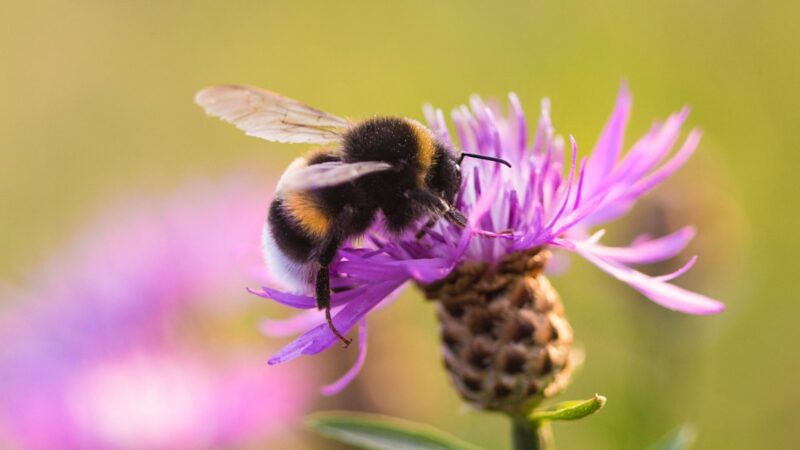
This is a collective term used to refer to bees belonging to the Bombus genus. They can also make honey but not in quantities compared to honey bees. Thus, managing bumble bee colonies for commercial purposes is impractical to most beekeepers.
Bumble bees, however, are commercially reared as they are effective pollinators for sweet peppers, tomatoes, strawberries, and other crops grown in greenhouse houses.
Stingless Bees
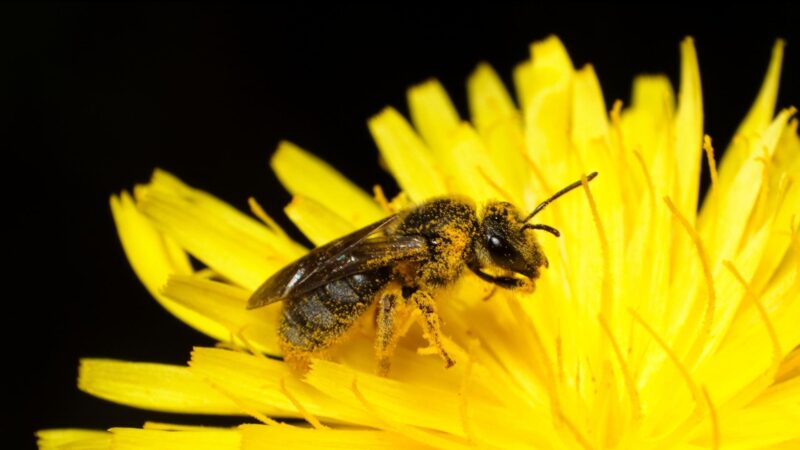
With 600 known species, stingless bees are the largest honey-making bee group. They belong to the tribe, Meliponini and are located in Asia, Africa, Australia, and Latin America.
Stingless bee honey is relatively expensive as they’re stored in small colonies and have a sweet and sour taste. It also has more moisture content than the average honey, making it more prone to fermentation, which is why it must be stored properly.
Does Any Other Insect Produce Honey?
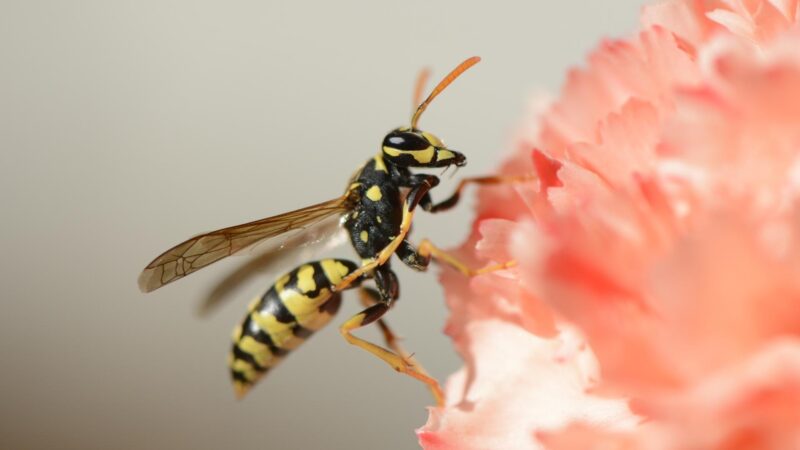
Other insect can produce honey, such as Mexican honey wasps and honeypot ants.
Mexican honey wasps, like honey-making bees, are also pollinators that can make honey in their colonies but only in small quantities. Their nests are made out of paper-like material, which differs from the bees’ wax comb.
Honeypot ants are known to forage nectar and use it to produce and store honey, but instead of putting it in their hives, they safely keep it in their abdomens before regurgitating it to feed other members of their colonies.
Why Do Only Bees Make Honey?
Bees aren’t the only insects who make honey. Mexican honey wasps and honeypot ants can also do so.
What Type of Bee Doesn’t Make Honey?
Bees that don’t come from the Apis genus or Apidae family cannot produce honey. This means all other bees aside from the honey bees, bumble bees, and stingless bees don’t make honey.
Specifically, bees who don’t make honey are leafcutting bees, sweat bees, miner bees, colletid bees, oil-collecting bees, and comb-bearer bees.
Here is more information on the bees that don’t produce honey:
Leafcutting Bees
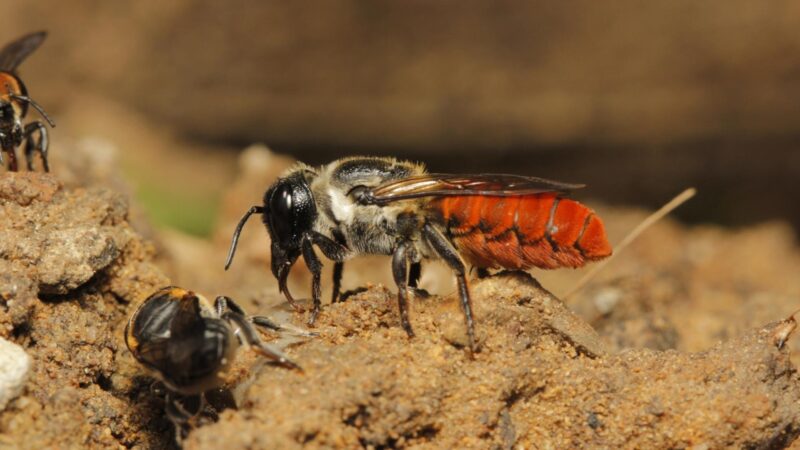
Referring to the family Megachilidae, leafcutting bees use cut leaves from plants to build their nests in cavities usually located in rotting wood. They prefer getting leaves from broadleaf deciduous plants or ornamental plants such as roses, bougainvillea, and azaleas.
They’re also used to commercially pollinate fruits and vegetables such as alfalfa, blueberries, carrots, and onions.
Sweat Bees
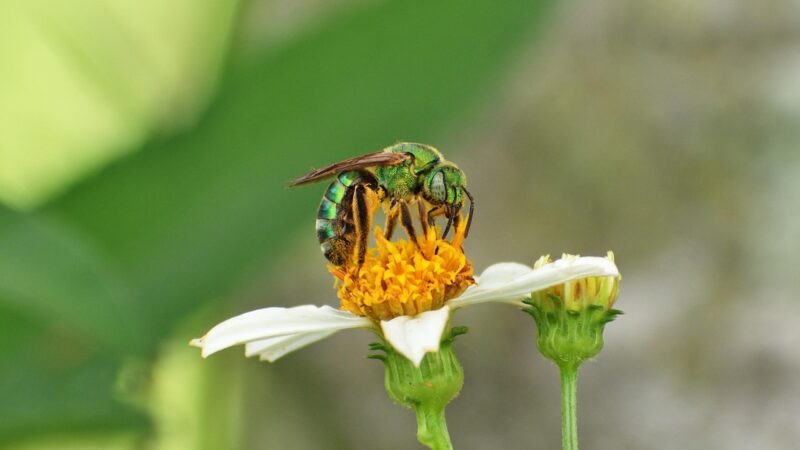
These members of the Halictidae family have diverse social behaviors as they can be completely solitary, communal, semi-social, or eusocial like most bees. They’re characterized by their metallic colors, although they can be non-metallic.
Sweat bees nest underground, usually constructed in rotting wood. They’re essential pollinators of a variety of crops such as alfalfa, stone fruits, and sunflower.
Miner Bees
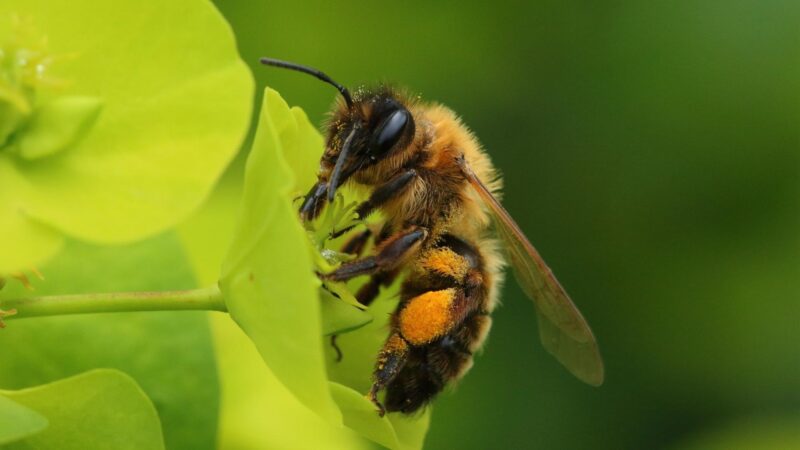
Miner bees are mistaken for bumble bees as they have similar black and yellow patterns and appear during summertime. They’re solitary, ground-nesting bees that construct chimney-shaped single nests through ground excavations.
These bees are generally docile species that are neither aggressive nor protective of their nests. However, they will sting if they’re handled roughly.
Colletid Bees
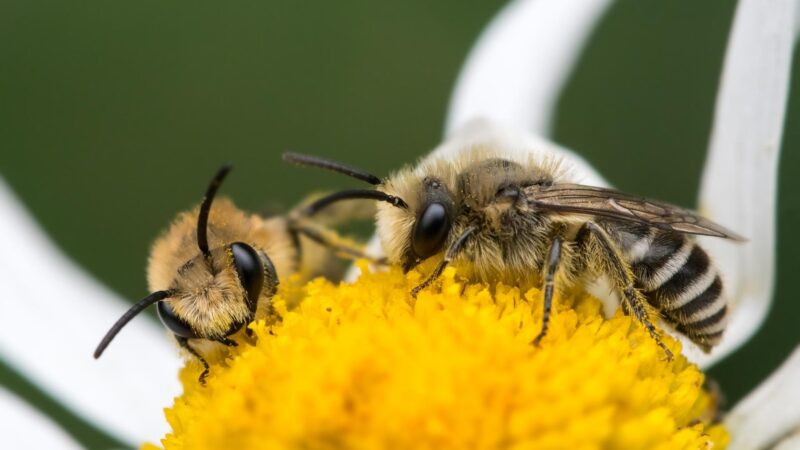
Belonging to the family Colletidae, they’re also referred to as plasterer bees, polyester bees, and cellophane bees due to the female bees plastering their brood cells with a cellophane-like substance.
They’re loud, solitary insects that are generally docile but will sting if handled hastily. They’re characterized by a small, unique forked tongue and build nests on the excavated ground.
Oil-collecting Bees
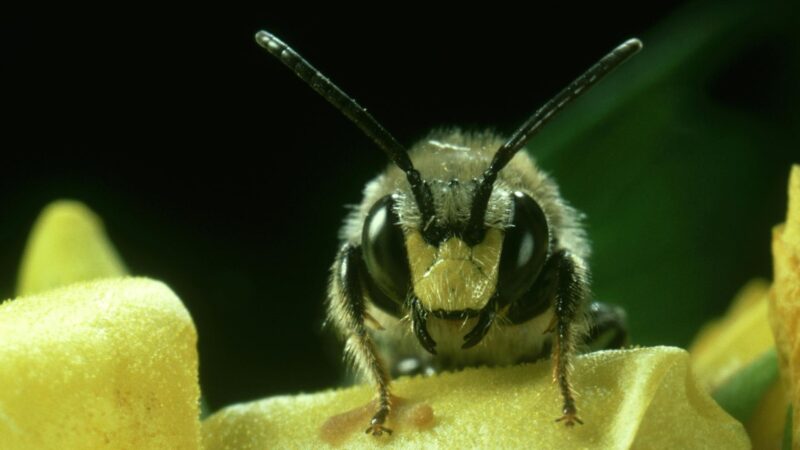
These bees highly depend on floral oils, hence their names. They have unique spongy hairs on their back legs specially designed for collecting floral oils or solid waxes. They also collect pollen from yellow loosestrife flowers.
Oil-collecting bees build nests in soil or bare streambanks near host plants. These nests are usually shallow and are reused for several years.
Swift and Comb-bearer Bees
These bees are the only two genera of the family Stenotritidae that are composed of only 21 species, all native to Australia. They were once considered part of the colletid bee family, but they didn’t have the same double-lobed tongues as colletid bees have.
Little is known about these bees, but they’re characterized to be fast flyers and construct simple nests on sand or the ground.
Do Bumble Bees Make Honey Like Honey Bees?
Bumble bees do make honey like honey bees. However, it is much smaller in amounts, compared to honey bees, and is not ideal for commercial production.
Is Honey Bee Vomit?
Honey bees can’t vomit. Nectar never really gets as far into the true digestive tracts of bees, according to an expert apiculturist. Nectar passes through the bee’s tongue and midgut, and once it is thick enough, it goes back to the bee’s tongue. Hence, it never reaches the stomach.
Can We Make Honey Without Bees?
We cannot make honey without bees. Honey, by definition, is processed when bees collect nectar from plants and, with the help of their honey sacs and specific bee enzymes, nectar turns into honey.
Melibio, a technology company is trying to replicate honey by using synthetic biology, fermentation, and plant science concepts. However, this is not considered real honey as it is not manufactured by bees.
What Happens if You Eat Killer Bee Honey?
If you eat killer bee honey, nothing will happen. Honey produced by killer bees is completely harmless and is as edible as the honey made by other honey-making bee species. Killer bees are also part of the Apis genus and are natural honey makers, but they don’t store as much honey compared to other honey bees.
Killer bees’ honey has a natural caramel taste to it, which is no different from the honey that honey bees produce. They also produce them in honeycombs constructed on any kind of cavity, whether they’re open and exposed nests or in-ground.
However, what makes killer bees dangerous is their management since they tend to attack in swarms, especially against intruders.
Killer bee beekeepers are equipped with the necessary skills and strategies to collect honey from killer bees.
Is There Fake Honey?
There are products that look like honey and even have the same consistency to it. Don’t be fooled, as these are made by a concoction of sweeteners, sugars, flavor additives and enhancers, food dyes, and fillers.
Fake honey can contain real honey made from bees but is still largely composed of non-nectar ingredients such as sugar canes and other synthetic ingredients.
How Can You Tell Fake Honey?
Here are ways you can distinguish real and fake honey:
- When buying honey, always read the label first. Check and assess the ingredients list if it contains only honey. There shouldn’t be any other additional ingredients. Otherwise, they would be considered fake.
- To test if it’s fake or real honey, drop a teaspoon or two into a glass of water. If it starts to dissolve immediately, it’s fake. On the other hand, if it sinks to the bottom without breaking apart or dissolving, it’s real.
- Place the honey at room temperature, then drop a small amount on your finger. If it spreads easily then it’s fake, but if it remains intact, then it’s true honey.
- Pure honey crystallizes as time goes by. So if your honey still has a syrupy consistency, then it may be a phony product.
- Plunge an unlit matchstick into the honey before striking it and observe if it lights up. If it does, the flame should burn the honey off, and you can determine it as true honey. If it doesn’t, it’s fake since fake honey has more moisture content.
What Is the Most Expensive Honey in the World?
Centauri Honey, a Turkish company, sells honey at roughly over $10,000 as of this writing. The Guinness World Records regards this as the most expensive honey in the world.
According to the company, Centauri Honey Classic is produced at bee colonies situated 2,500 meters above sea level and kept away from human communities to avoid the emergence of varroa mites.
Is It Safe to Eat Raw Honey?
It is safe to eat raw honey. However, it’s not safe to consume raw honey if you’re allergic to pollen, as it may cause severe allergic reactions. Avoid providing honey to infants, both raw and unpasteurized, since they’re at risk of botulism.
The benefits of eating raw honey include alleviating cough and throat irritation, reducing the risk of cancer and heart disease because of its antioxidant content, healing wounds, and soothing indigestion.
Honey bees, bumble bees, and stingless bees are the only bee species that can produce honey, although the latter two make it in smaller amounts but are still harvested and sold nonetheless.
Honey cannot be produced without bees, but there are artificial products and fake honey made to resemble their taste and consistency. Mexican honey wasps and honeypot ants can also make honey but not in the way bees do.
List of Sources
Garvey, K. K. (2016). Why Honey Is Neither Bee Vomit Nor Bee Barf. Agriculture and Natural Resources, University of California.
Anderson, L., Smith, M. (2020). The sweetness of honey. Michigan State University Extension.
Baker, J. (2022). Colletid Bees (Plasterer Bees, Cellophane Bees, and Polyester Bees). NC State Extension.
Buckley, K., Nalen, C. Z., Ellis, J. (2019). Common name: sweat bees, halictid bees. University of Florida.
Delaplane, K. S. (2017). Africanized Honey Bees.University of Georgia.
